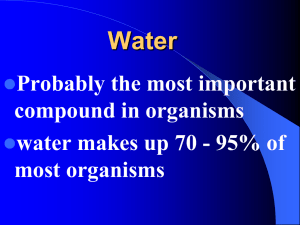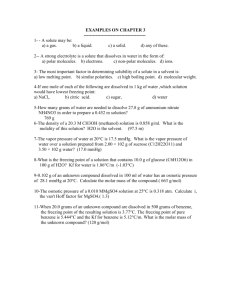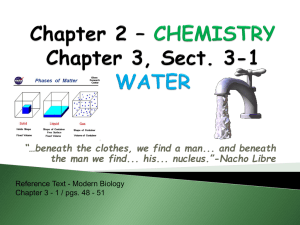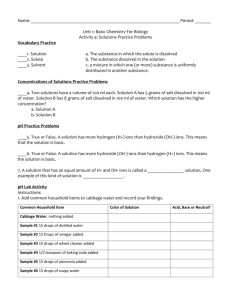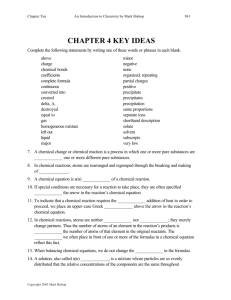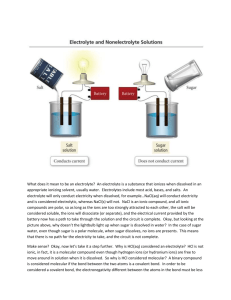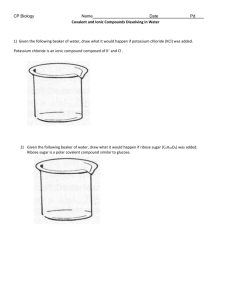Solutions & Electrolytes Study Guide: Chemistry Review
advertisement
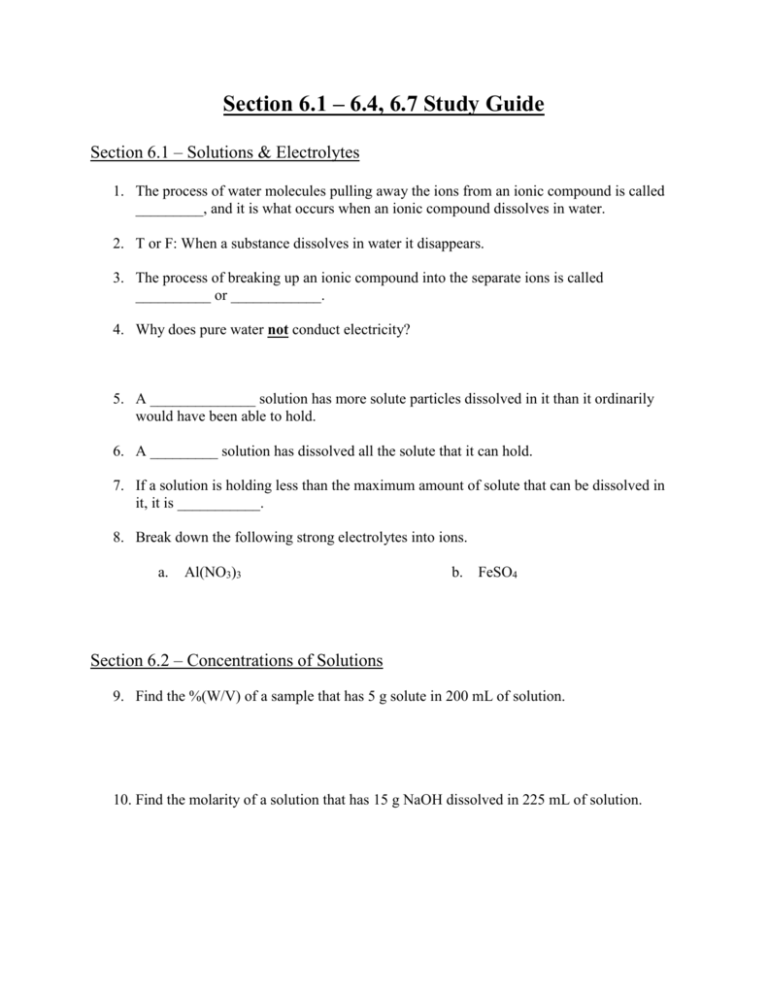
Section 6.1 – 6.4, 6.7 Study Guide Section 6.1 – Solutions & Electrolytes 1. The process of water molecules pulling away the ions from an ionic compound is called _________, and it is what occurs when an ionic compound dissolves in water. 2. T or F: When a substance dissolves in water it disappears. 3. The process of breaking up an ionic compound into the separate ions is called __________ or ____________. 4. Why does pure water not conduct electricity? 5. A ______________ solution has more solute particles dissolved in it than it ordinarily would have been able to hold. 6. A _________ solution has dissolved all the solute that it can hold. 7. If a solution is holding less than the maximum amount of solute that can be dissolved in it, it is ___________. 8. Break down the following strong electrolytes into ions. a. Al(NO3)3 b. FeSO4 Section 6.2 – Concentrations of Solutions 9. Find the %(W/V) of a sample that has 5 g solute in 200 mL of solution. 10. Find the molarity of a solution that has 15 g NaOH dissolved in 225 mL of solution. 11. A 250 mL sample is .5 M CaCl2. Find the %(W/V). Section 6.3 – Acidity & pH 12. A strong base is one in which all the molecules of the base produce _________ ions. 13. If the concentration of hydronium is greater than the concentration of hydroxide, the sample will be ______. 14. Find the hydroxide concentration of a solution with a pH of 11.6. Section 6.4 – Solubility & Precipitation 15. Ions that bond with other ions in a solution, form an insoluble compound called a ___________. 16. Finish the following equation: CaCl2 + AgNO3 Be sure to balance the equation and state the state of matter for each product and reactant. Section 6.7 – Properties of Solutions 17. The process of a liquid changing to a gas is called ___________. 18. The vapor pressure of a solution is always _____ than the vapor pressure of the pure solvent. 19. Solutions always boil at ______ temperatures than pure solvents. 20. When a substance’s solid phase and liquid phase are in equilibrium, that substance is at its ________ _____. 21. The freezing point of a solution will always be _____ than for the pure liquid. 22. Calculate the freezing point of a solution of 5 g of C12H10 and 7.5 g of C10H8 dissolved in 200 g of benzene, (has a freezing point of 5.5 °C).

